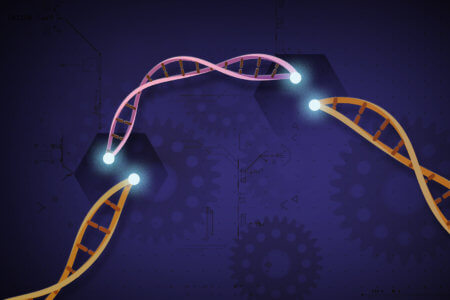Despite a new Nobel prize for the CRISPR discovery, there has been a lot of conversation surrounding CRISPR-Cas9 in these recent months as well as many sensational news stories.
Some of these stories highlight the promise this technology holds, while others emphasize a word of caution. But what exactly does this technology do and how does it work? Here is a breakdown that will help you better understand.
To start off, CRISPR is a naturally occurring process found in bacteria used as an immune system to defend against viruses. CRISPR simply put, are strands of DNA segments that contain repeating patterns. There are “scissor like” CRISPR proteins that have the ability to cut DNA segments. When a copy of a virus enters the bacteria, these “scissor like” proteins cut a segment of DNA from the virus and insert it into CRISPR. A copy of the viral DNA is made and another “attack” protein known as Cas9 attaches to it. By binding to the viral copy, Cas9 is able to sense that virus. When the same virus tries to enter the bacteria, Cas9 is able to seek and destroy it.
Many scientists analyzed this process in detail and it was eventually discovered that this CRISPR-Cas9 complex could be used to removed unwanted genes and insert a corrected copy, revolutionizing the way that we view the approach towards treating a wide variety of genetic diseases.
In fact, researchers at the Dana-Farber/Boston Children’s Cancer and Blood Disorders Center and the University of Massachusetts Medical School have developed a strategy using this complex to treat two inherited, lethal blood disorders, sickle cell disease (SCD) and beta thalassemia. Both of these diseases involve a mutation that effects production of red blood cells, which are produced by blood stem cells. In beta-thalassemia, the mutation prevent red blood cells from being able to carry enough oxygen, leading to anemia. In SCD, the mutations cause red blood cells to take on a “sickle” shape which can block blood vessels.
By using CRISPR-Cas9 to insert a corrected copy of the gene into a patient’s own blood stem cells, this team demonstrated that functional red blood cells can then be produced. These results pay the way for other blood disorders as well.
In a press release , Dr. Daniel Bauer, an attending physician with Dana-Farber and a senior author on both of these studies stated that,
“Combining gene editing with an autologous stem-cell transplant could be a therapy for sickle-cell disease, beta-thalassemia and other blood disorders.”
In a separate study, scientists at University of Massachusetts Medical School have developed a strategy that could be used to treat genetic disorders associated with unintentional repeats or copies of small DNA segments. These problematic small segments of DNA are called microduplications and cause as many as 143 different diseases, including limb-girdle muscular dystrophy, Hermansky-Pudlak syndrome, and Tay-Sachs.
Because these are issues caused by repeats or copies of small DNA segments, the CRISPR-Cas9 complex can be used to remove microduplications without having to insert any additional genetic material.
Dr. Scot A. Wolfe, a co-investigator of this study, stated that,
“It’s like hitting the reset button. We don’t have to add any corrective genetic material, instead the cell stitches the DNA back together minus the duplication. It’s a shortcut for gene correction with potential therapeutic appeal.”
Although there has been a lot progress made with this technology, there are still concerns that need to be addressed. An article in Science mentions how two studies have shown that CRISPR can still make unintended changes to DNA, which can be potentially dangerous. In the article, Dr. Jin-Soo Kim, a CRISPR researcher at Seoul National University is quoted as saying,
“It is now important to determine which component is responsible for the collateral mutations and how to reduce or avoid them.”
Overall, CRISPR-Cas9 has revolutionized the approach of precision medicine. A wide variety of diseases are caused by small, unexpected segments of DNA. By applying this approach found in bacteria to humans, we have uncovered a way to correct these segments at the microscopic level. However, there is still much that needs to be learned and perfected before it can be utilized in patients.
